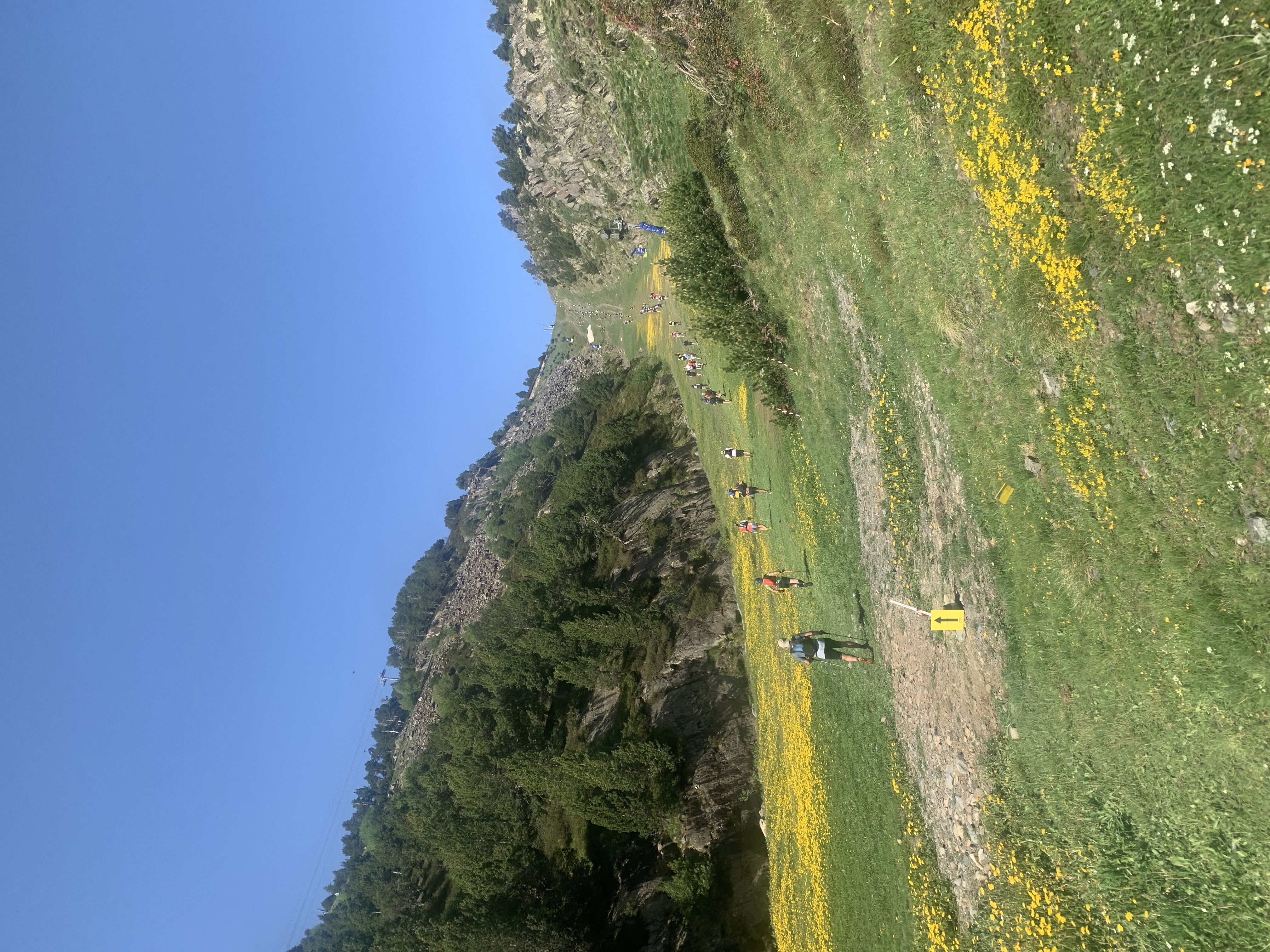Mid-Season Fatigue in Ultra Endurance Training: Recognizing and Overcoming the Slump

Ultra endurance athletes, whether cyclists pedalling up mountain passes or runners tackling endless trails, often experience a phenomenon known as "mid-season fatigue." This performance plateau or decline typically strikes in the middle of summer after one or two early season races, threatening to derail months of dedicated work. Let's explore why this happens, how to recognize it, and most importantly, how to overcome it to salvage your season.
Common Causes of Mid-Season Fatigue
1. Ramping Up Too Quickly
Many athletes, eager to capitalize on improved weather and upcoming events, increase their training load too rapidly. The body needs time to adapt to increased stress, and without proper progression, the result is often burnout rather than fitness gains.
For cyclists, this might look like jumping from 10-hour training weeks to 15+ hours without adequate build-up. Runners might suddenly double their weekly mileage when trail conditions improve. While motivation may be high, physiological adaptation requires patience.
2. Focusing on Too Many Training Elements Simultaneously
Ultra endurance performance depends on multiple fitness components: aerobic endurance, strength, technique, and mental fortitude. Attempting to improve everything at once often leads to diminishing returns and excessive fatigue.
When cyclists simultaneously tackle high-intensity intervals, long endurance rides, technical skills, and strength training without proper periodization, the body struggles to absorb and respond to these varied stressors. Runners face similar challenges when trying to improve speed, endurance, hill strength, and technical trail skills all at once.
3. Inadvertent Volume Increases with Seasonal Changes
The longer daylight hours and pleasant weather of late spring and summer naturally encourage longer training sessions. What might have been a two-hour ride in March can easily become four hours in June without seeming excessive. This gradual, often unconscious increase in volume can accumulate significant additional fatigue.
Many athletes fail to recognize these creeping increases in training load, particularly when the weather makes longer sessions more enjoyable. The body, however, registers every minute of additional stress.
4. Nutritional Deficits During Increased Training
As training volume increases, nutritional needs change dramatically. Many athletes maintain their off-season or early-season eating habits even as their energy expenditure rises significantly.
Cyclists burning an additional 1,000+ calories on longer rides or runners depleting glycogen stores on back-to-back long runs require proportional increases in caloric intake and specific attention to macronutrient balance. Without this nutritional adjustment, recovery becomes impossible, regardless of sleep quality or rest days.
5. Excessive Intensity and Inadequate Recovery
The middle of the season often brings a proliferation of racing opportunities. The temptation to participate in "training races" or test fitness at local events can lead to an unsustainable pattern of high-intensity efforts without adequate recovery between them.
Both runners and cyclists frequently underestimate the recovery needed after race efforts, even shorter ones. The cumulative impact of these intense sessions, especially when recovery is compromised, accelerates the onset of mid-season fatigue.
Recognizing Mid-Season Fatigue
Identifying mid-season fatigue early can prevent a complete derailment of your training season. Watch for these warning signs:
Physical Indicators
- Persistent elevated resting heart rate (5+ beats above your normal)
- Unusual muscle soreness that doesn't resolve with typical recovery
- Sleep disturbances despite physical tiredness
- Decreased power output or pace at the same perceived effort
- Frequent minor illnesses or prolonged recovery from colds
Performance Indicators
- Inability to complete workouts that were previously manageable
- Declining performance metrics despite consistent training
- Heart rate that doesn't respond normally to effort (either too high or too low)
- Dramatic performance inconsistency from day to day
Psychological Indicators
- Decreased motivation for training
- Anxiety about upcoming workouts
- Irritability or mood swings
- Loss of enjoyment in activities that usually bring pleasure
- Obsessive focus on performance metrics or excessive worry about fitness
Salvaging Your Season: Getting Back on Track
If you recognize the signs of mid-season fatigue, act quickly with these recovery strategies:
1. Strategic Recovery Block
Implement a 7-10 day recovery period with drastically reduced volume and intensity. This isn't a complete break from training but rather a deliberate reduction to allow physiological recovery.
For cyclists, this might mean reducing weekly hours by 50% and keeping heart rate below 75% of maximum. Runners might cut mileage by a similar percentage and focus on easy, enjoyable runs rather than structured workouts.
2. Nutritional Reset
Address potential nutritional deficits by:
- Increasing overall caloric intake to match current expenditure
- Focusing on quality protein for muscle repair (1.6-2.0g/kg body weight daily)
- Restoring glycogen with adequate carbohydrates (6-10g/kg for heavy training days)
- Ensuring adequate fat intake for hormonal health (at least 20% of total calories)
- Addressing potential vitamin and mineral deficiencies, particularly iron, vitamin D, and B vitamins
3. Sleep Prioritization
Make sleep your top recovery tool by:
- Aiming for 8-9 hours of quality sleep per night
- Creating consistent sleep and wake times
- Eliminating screens 60 minutes before bedtime
- Creating optimal sleeping conditions (cool, dark, quiet room)
- Considering short (20-30 minute) daytime naps if possible
4. Training Recalibration
After your recovery block, rebuild with a more sustainable approach:
- Clearly prioritize training goals based on upcoming key events
- Implement proper periodization with focused blocks on specific aspects
- Build in regular recovery weeks (every 3-4 weeks)
- Reduce overall training volume by 10-20% from your peak to create sustainable loading
- Carefully track subjective feelings along with performance metrics
5. Event Selection Strategy
Be realistic about your remaining season goals:
- Accept that you may need to revise the number of events you've committed to this season
- Consider selecting just one key ultra event for the remainder of your season to focus your recovery and subsequent training
- Prioritize lighter training, enjoyment, and social sessions with friends during your recovery period
- Understand that even at reduced efforts, ultra events demand tremendous physical resources and create significant recovery debt
- Be willing to make the difficult decision to withdraw from events if necessary to protect your long-term health and performance
- Remember that one well-executed event after proper recovery will be more satisfying than multiple compromised performances
Prevention for Future Seasons
Looking ahead, implement these strategies to prevent mid-season fatigue:
- Plan your season with clear periodization and built-in recovery blocks
- Use heart rate variability or other recovery metrics to monitor fatigue
- Allow adequate spacing between ultra events – typically 6-8 weeks minimum between major efforts
- Recognize that while it's possible to complete two ultras with minimal training between them (relying on recovery and existing fitness), this approach requires perfect execution of recovery protocols and increases injury risk
- Develop personalized recovery indicators based on your own experience, as standard formulas often underestimate recovery needs after extreme endurance efforts
- Pay particular attention to subjective measures of readiness and fatigue, which often prove more reliable than algorithmic predictions
- Document your personal recovery timeline from previous ultra events to better understand your individual needs
- Work with a coach or experienced training partner who understands the unique demands of ultra events and can provide objective feedback
Our Traffic Light Tracker could help you track recovery status using your own personal assessment in combination with training metrics.
Conclusion
Mid-season fatigue is common among ultra endurance athletes, but it doesn't have to end your season. By recognizing the warning signs early and implementing strategic recovery and training adjustments, you can overcome this temporary setback and emerge stronger for your key events.
Remember that consistency over time, not any single workout or training block, builds the foundation for ultra endurance performance. Sometimes taking a step back allows you to ultimately move forward more effectively.
Subscribe to our blog
Please share with your friends
Other articles you might like
June 26, 2025


Comments